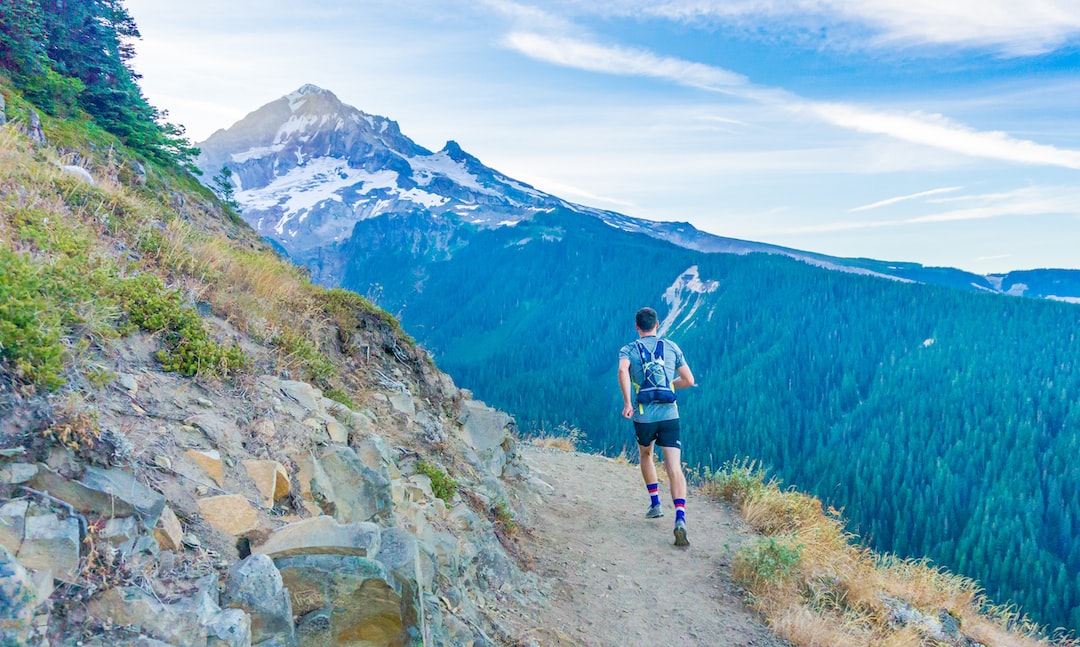Going on a hike can be a refreshing and invigorating experience, giving you the opportunity to connect with nature, challenge yourself physically, and explore some beautiful landscapes. However, knowing how far you can go on a daily basis is a common question that hikers, both beginners and experienced alike, often ask themselves. Factors such as the individual’s fitness level, the type of terrain, available time, and the desired level of comfort can all influence the ideal daily hiking distance.
The daily hiking distance you can cover depends on factors such as your fitness level, trail difficulty, and backpack weight. On average, hikers may cover 7.5-15 miles per day on a multi-day trip. Beginners should aim for 5 miles or less, while experienced hikers may tackle more than 20 miles. Always hike within your ability to ensure safety.
What’s Your Fitness Level?
Understanding your fitness level is a crucial starting point for determining the appropriate daily hiking distance. Ask yourself the following:
How often do you exercise?
In my experience, individuals who already engage in regular physical activity will typically be able to cover more distance on their first hikes compared to those who lead a sedentary lifestyle. If you’re new to hiking, start by exploring shorter trails and gradually increase the distance as your fitness level improves.
Can you handle extended periods of physical exertion?
Multi-day hikes require stamina and endurance to cover long distances day after day. Assess your ability to handle repetitive physical exertion by considering how you’ve fared during other endurance activities, such as running, swimming, or biking.

What Type of Terrain Are You Hiking On?
The terrain can significantly impact the distance you’ll be able to cover in a day. Some different types of terrain to consider include:
Flat or rolling hills
Hiking on flat or gently sloped terrain is generally easier and faster, allowing you to cover more distance in a shorter amount of time. However, don’t forget to factor in any necessary breaks along the way, such as stopping for lunch or taking pictures.
Steep inclines and mountains
Challenging uphill climbs can reduce the distance you’re able to cover in a day. As you ascend, the effect of elevation on your body may compound the difficulty. It’s essential to pay attention to the potential impacts of altitude sickness and take relevant precautions.
Rough, uneven surfaces
Hiking on rocky, slippery, or muddy terrains will typically require more cautious footwork, which may slow you down. Be sure to factor in the challenging surfaces, especially when planning routes in unfamiliar environments.
Planning Your Time and Route
The amount of time you have available for your hike will ultimately dictate the distance you can cover. Whether you’re going for a day hike or an extended multi-day excursion, setting a realistic itinerary will help you avoid fatigue and injury. Consider the following factors:
Daylight hours
Sunrise and sunset will define the number of daylight hours you have to hike. Plan your route to ensure that you can safely reach your destination or campsite before dark. Don’t forget to factor in extra time for breaks, lunch, and other unexpected delays.
Rest and recovery time
On longer hikes, it’s essential to factor in sufficient time for rest and recovery. By planning shorter days or designated rest days throughout your hike, you can avoid overexertion and give your muscles time to repair themselves.
Weather conditions
Weather can greatly affect your hiking speed and the overall distance you can cover in a day. Research the weather patterns of the region you’ll be hiking in and plan accordingly. Allow for extra time to navigate potentially challenging conditions, such as rain or snow.

Establishing a Comfortable Pace and Daily Mileage
Individual preferences and goals will influence the pace and daily mileage you opt for during your hike. Consider the following:
Enjoyment-focused hikes
If you prioritize relaxation and enjoyment of nature over pushing physical boundaries, you might prefer a slower pace, covering 5-10 miles per day. This will allow for ample time to take in the scenery, stops for photography, and leisurely breaks.
Physically challenging hikes
For those seeking to test their physical limits, you could aim for 10-20 miles (or more) per day. This typically means a faster pace with shorter breaks, allowing you to cover more ground. Keep in mind that this approach may lead to a higher risk of fatigue and injury.
Thru-hikes
Thru-hikes, such as the Appalachian Trail or the Pacific Crest Trail, often require covering significant distances to complete within a specific time frame. Experienced thru-hikers may average 20-30 miles per day. However, starting with shorter distances and gradually increasing as your body adjusts is advised.
Final Thoughts on Daily Hiking Distance
When it comes to determining how far you can go during your daily hikes, there’s no one-size-fits-all answer. Factors such as your fitness level, the terrain, time availability, and personal preferences will all influence your ideal daily distance.
Start by realistically assessing your abilities and planning your route with these factors in mind. Remember, it’s essential to listen to your body and make adjustments as needed, whether that’s increasing or decreasing your daily mileage.
Happy hiking, and take the time to enjoy the journey!
Setting Personal Goals and Adjusting Expectations
When determining your daily hiking distance, consider setting personal goals that align with your motivations for hiking. Are you primarily hiking for fitness, mental well-being, or to experience nature? The answers to these questions can help you set appropriate and realistic daily distances.
Fitness-focused goals
If you’re using hiking as a way to improve your physical fitness, you may want to establish goals based on distance, elevation gain, or time. In this case, gradually increasing your daily distance or tackling more challenging terrain can help you build strength and endurance while staying true to your fitness objectives.
Mental well-being and relaxation
For some, hiking is an opportunity to escape the daily grind and reconnect with nature. If your primary motivation is mental well-being, you may prefer slower-paced hikes with lower daily distances. This approach allows more time for reflection, mindfulness, and appreciation of the natural surroundings.
Nature exploration and photography
For nature enthusiasts and photographers, the focus may be on exploring unique natural features or capturing breathtaking landscapes. In this case, planning your daily hiking distances around specific destinations or points of interest will help ensure that you have ample time to fully immerse yourself in these experiences.

Accounting for Terrain Variability and Unexpected Challenges
No two hikes are exactly the same, and often, the greatest challenges on the trail are those we don’t anticipate. When planning your daily hiking distance, it’s essential to remain adaptable and account for any unexpected obstacles along the way.
Trail conditions
Trail conditions can change quickly, transforming an easy path into a challenging obstacle course. Unexpected obstacles, such as fallen trees, flooding, or closed trails, can slow your progress or require detours. When planning your daily hiking distances, allow some buffer time to navigate any unforeseen challenges and maintain a flexible mindset.
Injury or illness
Injuries, illnesses, or general fatigue during your hike can impact your ability to cover your planned daily distance. Listen to your body and know when to slow down, take a break, or seek help if needed. Always prioritize your health and well-being over adhering strictly to your planned itinerary.
Wildlife encounters
While encountering wildlife can be a thrilling experience, it can also be potentially dangerous or disruptive to your hike. Understanding the wildlife in the area you’re hiking and any precautions you should take is essential. In some cases, these encounters might necessitate adjusting your daily hiking distance or altering your route.
Packing Efficiently for Optimal Daily Hiking Distances
The weight and organization of your backpack can significantly influence your daily hiking distance. Carrying an excessively heavy pack might slow you down and lead to fatigue more quickly, while a well-packed and organized bag can help conserve your energy.
Only pack the essentials
Reduce the weight of your pack by carefully considering the items you’ll need during your hike. Opt for lightweight gear where possible and avoid packing unnecessary items that can weigh you down. A lighter pack will allow you to cover greater distances with more ease and comfort.
Invest in quality gear
Investing in durable, lightweight gear specifically designed for hiking can make a difference in your daily hiking distance. High-quality footwear, backpacks, and clothing can help minimize discomfort and injuries while maximizing your efficiency on the trail.
Practice smart packing techniques
Organizing your backpack efficiently can make a significant difference in how comfortable and accessible your gear is during your hike. Prioritize frequently-used items for easy access and ensure that your pack’s weight is evenly distributed. A well-packed backpack can help conserve energy and maintain a steady pace, allowing you to cover more distance each day.
By incorporating these considerations into your planning and approach to hiking, you’ll be well-equipped to determine and achieve your ideal daily hiking distance. Stay open to adjustments and always prioritize safety and well-being above all, and you’ll find success and enjoyment on the trail.





